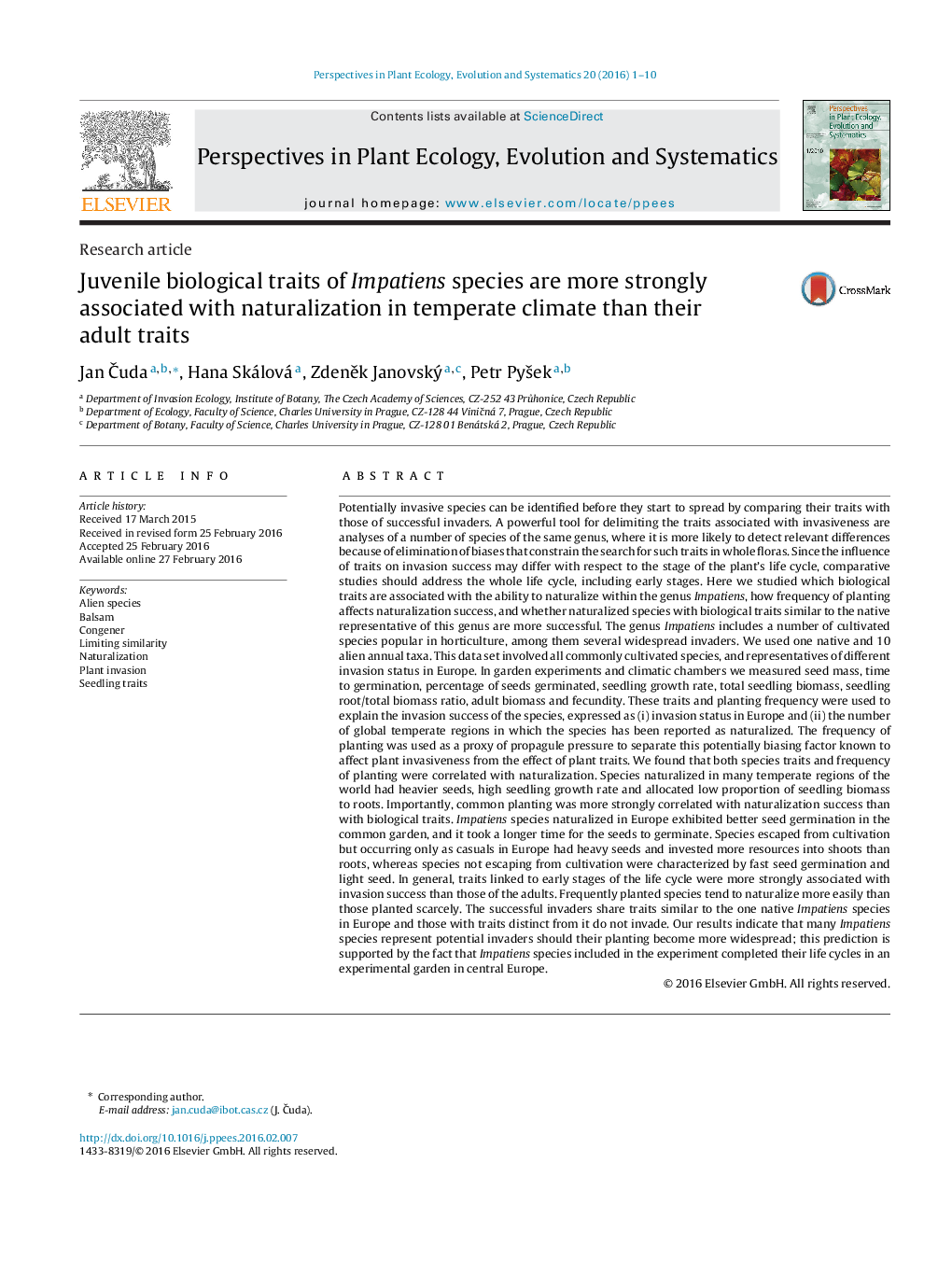| کد مقاله | کد نشریه | سال انتشار | مقاله انگلیسی | نسخه تمام متن |
|---|---|---|---|---|
| 4400911 | 1618600 | 2016 | 10 صفحه PDF | دانلود رایگان |
• Juvenile traits of Impatiens species are associated with naturalization success.
• Naturalization is supported by heavy seed and fast seedling growth rate.
• Common planting strongly contributes to Impatiens naturalization.
Potentially invasive species can be identified before they start to spread by comparing their traits with those of successful invaders. A powerful tool for delimiting the traits associated with invasiveness are analyses of a number of species of the same genus, where it is more likely to detect relevant differences because of elimination of biases that constrain the search for such traits in whole floras. Since the influence of traits on invasion success may differ with respect to the stage of the plant's life cycle, comparative studies should address the whole life cycle, including early stages. Here we studied which biological traits are associated with the ability to naturalize within the genus Impatiens, how frequency of planting affects naturalization success, and whether naturalized species with biological traits similar to the native representative of this genus are more successful. The genus Impatiens includes a number of cultivated species popular in horticulture, among them several widespread invaders. We used one native and 10 alien annual taxa. This data set involved all commonly cultivated species, and representatives of different invasion status in Europe. In garden experiments and climatic chambers we measured seed mass, time to germination, percentage of seeds germinated, seedling growth rate, total seedling biomass, seedling root/total biomass ratio, adult biomass and fecundity. These traits and planting frequency were used to explain the invasion success of the species, expressed as (i) invasion status in Europe and (ii) the number of global temperate regions in which the species has been reported as naturalized. The frequency of planting was used as a proxy of propagule pressure to separate this potentially biasing factor known to affect plant invasiveness from the effect of plant traits. We found that both species traits and frequency of planting were correlated with naturalization. Species naturalized in many temperate regions of the world had heavier seeds, high seedling growth rate and allocated low proportion of seedling biomass to roots. Importantly, common planting was more strongly correlated with naturalization success than with biological traits. Impatiens species naturalized in Europe exhibited better seed germination in the common garden, and it took a longer time for the seeds to germinate. Species escaped from cultivation but occurring only as casuals in Europe had heavy seeds and invested more resources into shoots than roots, whereas species not escaping from cultivation were characterized by fast seed germination and light seed. In general, traits linked to early stages of the life cycle were more strongly associated with invasion success than those of the adults. Frequently planted species tend to naturalize more easily than those planted scarcely. The successful invaders share traits similar to the one native Impatiens species in Europe and those with traits distinct from it do not invade. Our results indicate that many Impatiens species represent potential invaders should their planting become more widespread; this prediction is supported by the fact that Impatiens species included in the experiment completed their life cycles in an experimental garden in central Europe.
Journal: Perspectives in Plant Ecology, Evolution and Systematics - Volume 20, June 2016, Pages 1–10
